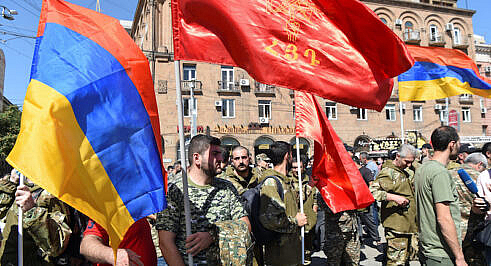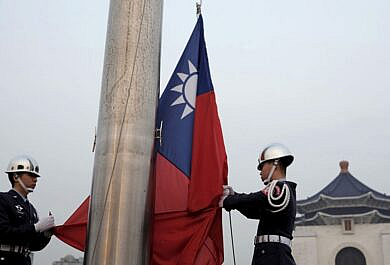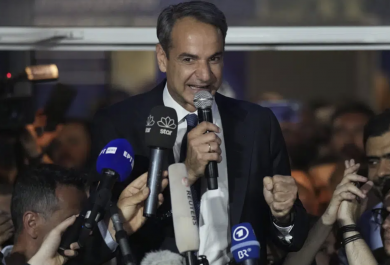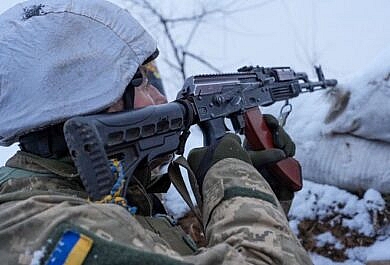Armenia and Azerbaijan are clashing in a disputed border region. What happened?
Summary
Fighting in Nagorno-Karabakh, a disputed region south of the Caucasus Mountains on the border of Armenia and Azerbaijan, is becoming increasingly violent.
- Nagorno-Karabakh is a region about the size of Delaware. It is located in Azerbaijan but its majority population is ethnically Armenian.
- The region held a referendum in 1988 as the Soviet Union destabilized, and voted to become part of Armenia; Azerbaijan claimed the territory and a war ensued. During the conflict, about one-fifth of the region’s population died.
- Russia negotiated a ceasefire in 1994. Since then, the territory has remained a part of Azerbaijan but is controlled by Armenian separatists, and sporadic violence has continued.
- Azerbaijan has large oil reserves and is aligned geopolitically with Turkey. Its population is majority Muslim. Armenia is closely aligned geopolitically with Russia, and its population is majority Christian. Both countries are in a geographically strategic location near Iran, Russia, Turkey, and major natural resource reserves; they are also home to several oil and gas pipelines.
- A renewed conflict began on Sunday night as both Azerbaijan and Armenia claimed that the other initiated violence. The scuffle escalated to levels not seen since 2016, and international commentators fear that it may continue to escalate to a full-on war.
- Armenia has called Azerbaijan’s violence a declaration of war and enacted martial law.
- Dozens have died in the conflict since Sunday, including 9 Armenian civilians, and hundreds have been wounded.
- Turkish President Recep Tayyip Erdogan has expressed emphatic support for Azerbaijan in its “battle against invasion and cruelty,” and ordered Armenia to end its occupation of the region.
- On Monday, two Syrian rebels arrived in Nagorno-Karabakh, allegedly sent by Erdogan to support Azerbaijan in the conflict. The fighters said that they were offered a living wage and that up to 1,000 Syrian rebels had been deployed to the area. Both Turkish and Azeri leaders have denied these claims.
- Russian officials have pushed for a ceasefire and peace talks. Iran has offered to broker these talks.
- The United States has condemned the violence, but ruled out intervention: an official statement yesterday said that “participation in the escalating violence by external parties would be deeply unhelpful and exacerbate regional tensions.”
![]()
- Focuses on the economic implications, acknowledging that Azerbaijan is a major producer of crude oil but assuring readers that military conflict in the region is unlikely to noticeably affect oil prices.
- Criticizes Trump’s response to the issue, which was minimal. Vice President Joe Biden pushed Trump to deploy “observers” to the ceasefire line and put more pressure on Russia to end the conflict.
- Reports that Erdogan may have misstepped by aligning so swiftly and enthusiastically with Azerbaijan, and report heavily on the narrative that Erdogan deployed Syrian rebels to the region for assistance.
![]()
- Labels the clashes a proxy conflict between Turkey and Russia.
- Reports that Turkey has lent extensive military technology and equipment to Azerbaijan, including state-of-the-art drones. The two nations conducted joint military exercises recently, and reporters think that Turkey left some of its equipment in Azerbaijan when they left.
- Argues that the United States should intervene in order to prevent the conflict from escalating or another country from gaining an advantage.
© Evelyn Torsher, 2020






